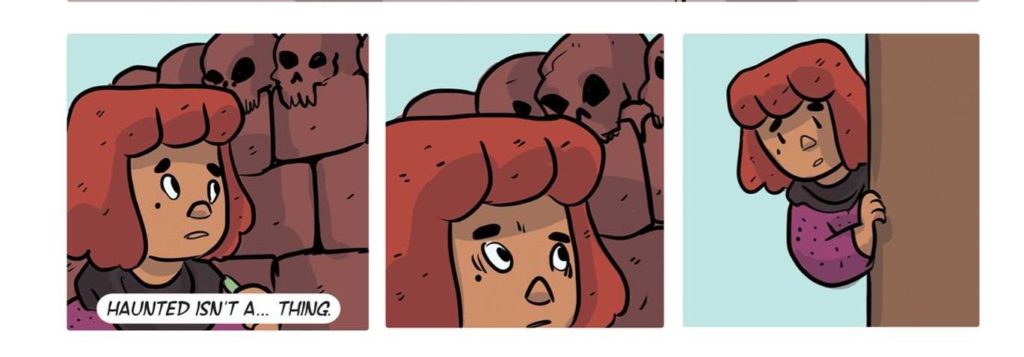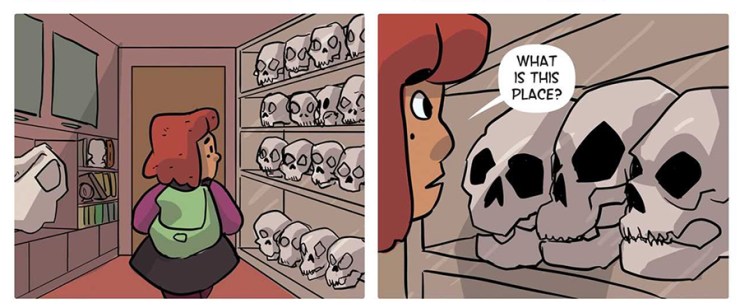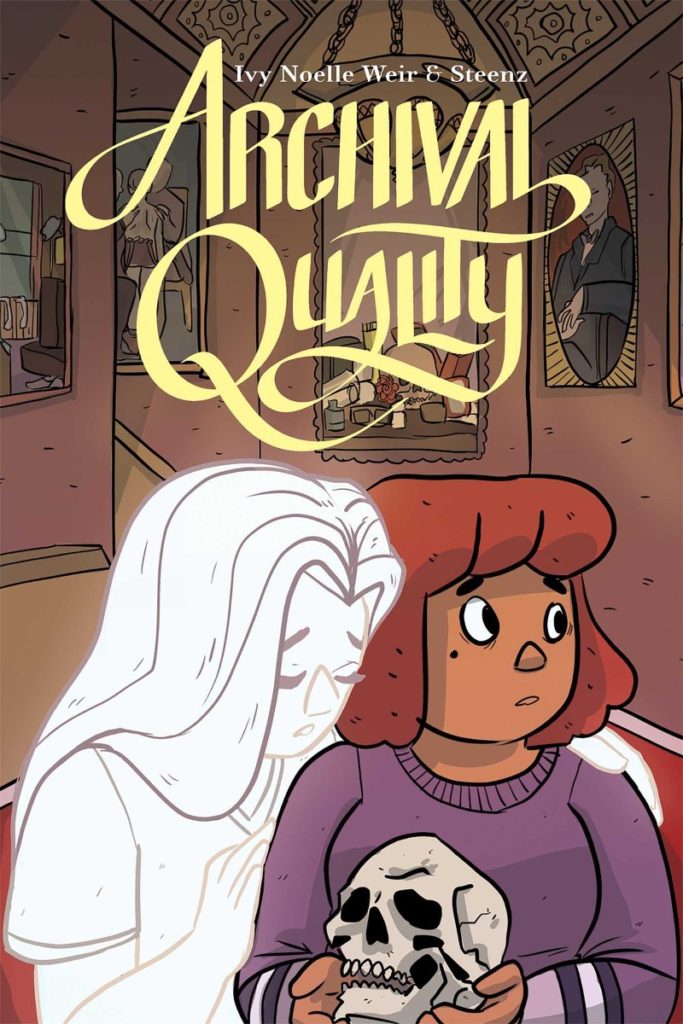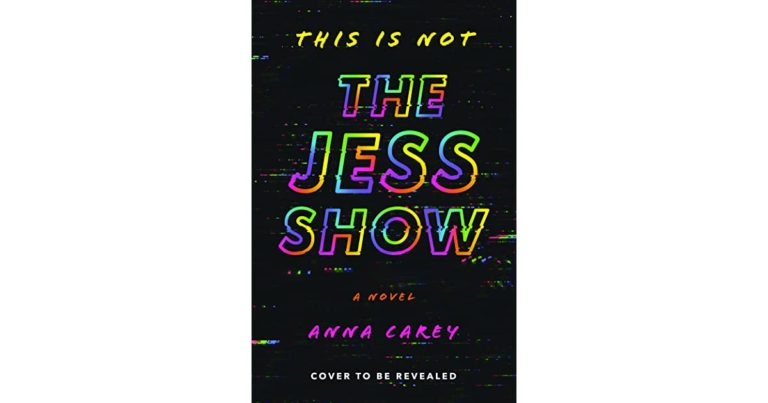October is the time for ghost stories. I’m especially partial to ghost stories where the ghost is reaching out to the living for help. Archival Quality, a graphic novel by Ivy Noelle Weir and Steenz, has one of these ghosts. It also has some very human humans.
The main character in Archival Quality is a young woman named Celeste. She had been working at a library doing a job that she enjoyed but was let go after her mental health issues got in the way. Seeking to get her life back to normal, Celeste answers an ad from the Logan Museum seeking an archival assistant.
This all hits very close to me. My job sounds very similar to Celeste’s previous one, I’ve had problems with anxiety for a long time, and working in a museum’s archive is something that I would love to do.
Maybe not at the Logan Museum, though.

There’s something . . . off . . . about it, beyond the general creepiness of the old building.
The Logan Museum staff seem to be hiding something. They also seem intimidated by the board, the mysterious group that runs the Logan.
Then there’s the mysterious disappearance of the former Chief Curator.
Celeste begins her work scanning photographs and documents into an ancient computer. She has to work in the middle of the night as to not disturb any of the Logan’s (non-existent) visitors. Celeste tries to avoid looking at the pictures at first; the Logan had been an orphanage and a sanitarium in the past, and some of the pictures are disturbing.
It’s not very hard work, and Celeste is moving along just fine. Then weird things start to happen. Strange noises and things start appearing where they shouldn’t have been. Nothing atypical in a ghost story.

At first, Celeste isn’t sure if the happenings are real or if it’s going on in her head. The more time passes, the more convinced she is that everything is real and that one of the former patients is reaching out for help. Celeste is initially alone in her search, but she eventually manages to get one of her coworkers to admit that the ghost had interacted with him, too.
The other coworker is more skeptical, but supportive, because she’s a good friend. Together they work to find the truth and maybe let the ghost rest.
Celeste’s personal ghosts play a part in the story. The unusual job put a lot of stress on her and makes the people around her worry about her. Especially her relationship with her boyfriend. He was there when she was at her lowest and doesn’t want her to return there. He wants her to take a step back and maybe return to her doctors.
Celeste wants to push forward.
It creates conflict between them, even though they really want the same thing. It’s a very real moment.

Celeste sees herself in the ghost, and helping the ghost might mean something good for her, too.
The illustrations are great. The style is not super realistic, yet not super cartoony either. My favorite thing is the clothes. Each character has several changes of clothes like a real person, and all of them are consistent throughout for what that character has in their wardrobe. The ghost is depicted in sepia tones, even when she interacts with Celeste.
The story ends on a hopeful tone for Celeste, though not a happily ever after one. She’s got a new therapist and supportive friends. I like that; the real parts of the story were so real that it would have felt off if had been more sunny.










